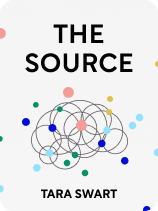

This article is an excerpt from the Shortform book guide to "The Source" by Tara Swart. Shortform has the world's best summaries and analyses of books you should be reading.
Like this article? Sign up for a free trial here.
How can you improve your self-awareness? What are good journaling exercises for self-awareness?
According to The Source by Tara Swart, self-awareness is what helps you identify and take advantage of opportunities for change. She describes several journaling exercises that can increase your self-awareness.
Let’s look at how to improve your self-awareness below.
Increase Your Self-Awareness
The first step to learning how to improve your self-awareness is to journal. Swart recommends a journaling exercise to increase your awareness of how your childhood continues to influence you today. She explains that your upbringing, and particularly what you learned from the people you were attached to, strongly influences who you are today. These relationships served as models for you in childhood. They created neural pathways between triggers (like stress, poverty, and nourishment) and responses, giving you a blueprint for how to deal with the situations in your life. To keep these learned responses from controlling your life, you must be aware of them.
Swart recommends listing things like the roles you and other members of your family played when you were growing up, the secrets your family kept and how they impacted you, the beliefs and values your family held, and how your family viewed boundaries and rules. Consider how these things continue to impact you and write down ways in which you notice them in your life today.
(Shortform note: Other experts also highlight the benefits of reflecting on your childhood experiences and roles to better understand your present. Some recommend creating a narrative account of your childhood using activities like those Swart describes, as well as resources like the Adult Attachment Interview. They suggest the self-awareness you gain from creating such a narrative helps your brain integrate different regions and connections to improve its functioning. Some experts suggest you go even further and create a genogram, a diagram detailing your extended family and their different traits. This can enhance your self-awareness even more and help you understand and deal with generational issues and other family patterns.)
Next, Swart recommends an exercise to help you more deeply understand the patterns and beliefs you picked up from childhood (many of which you’ll have noticed during the first exercise). She suggests listing six beliefs that restrict or obstruct your happiness. Then, for each one, describe the evidence you have to support that belief. Next, write down the evidence you have that contradicts that belief. Finally, reflect on whether these beliefs add or detract from your life, and how you might let go of the ones that don’t serve you.
| Types of Limiting Beliefs In Time to Think, Nancy Kline describes three types of limiting beliefs. Some limiting beliefs are statements of facts, which are objectively true—for example, “I currently don’t have [insert what you want].” While facts may seem absolute, holding onto them as beliefs can limit you by making you think they’re unchangeable, which they often aren’t. Another type of belief she describes are conjectures, or beliefs about things that might happen—for example, “If I take a risk to try to get what I want, I might fail, and that would be bad.” In addition to misframing failure as a bad thing, this belief assumes that something will go wrong when it might not. The third type of limiting belief Kline describes is core assumptions. These are the foundational beliefs about ourselves and the world that we often don’t even realize we have—for example, “I don’t deserve [insert what you want].” These are frequently picked up during childhood and thus may be the best ones to address in Swart’s exercise. |

———End of Preview———
Like what you just read? Read the rest of the world's best book summary and analysis of Tara Swart's "The Source" at Shortform.
Here's what you'll find in our full The Source summary:
- How to get the most out of your brain by tapping into its immense power
- How to use the major principles of the Law of Attraction
- The four-step process to change your life





